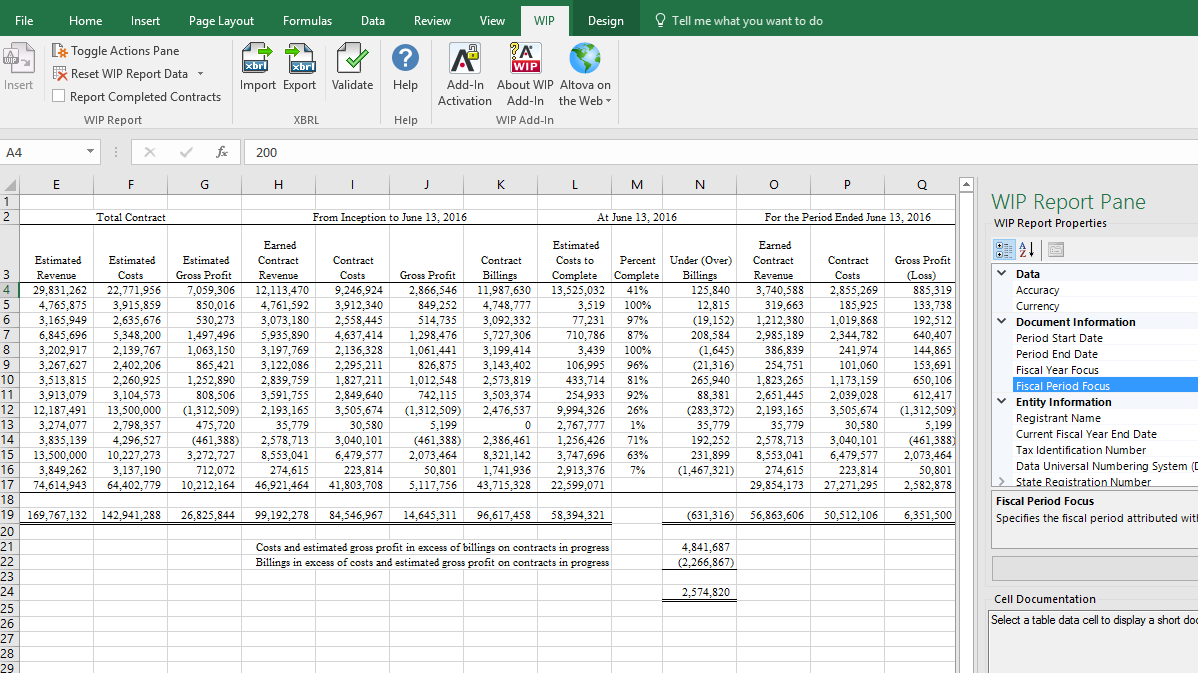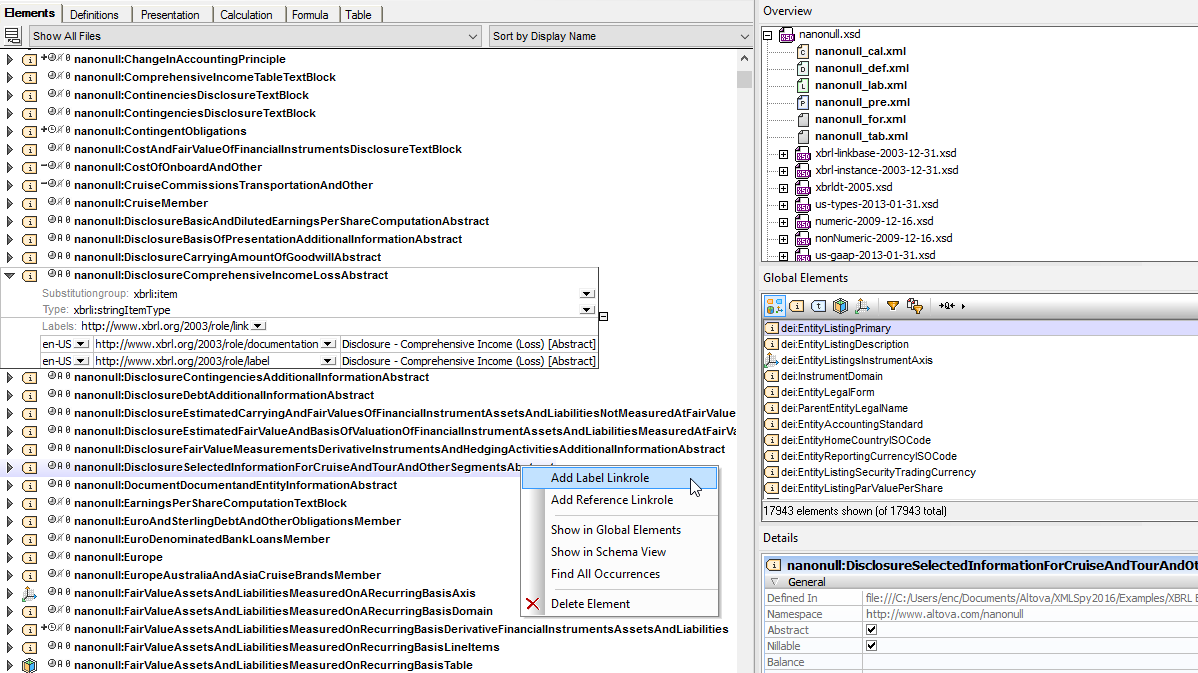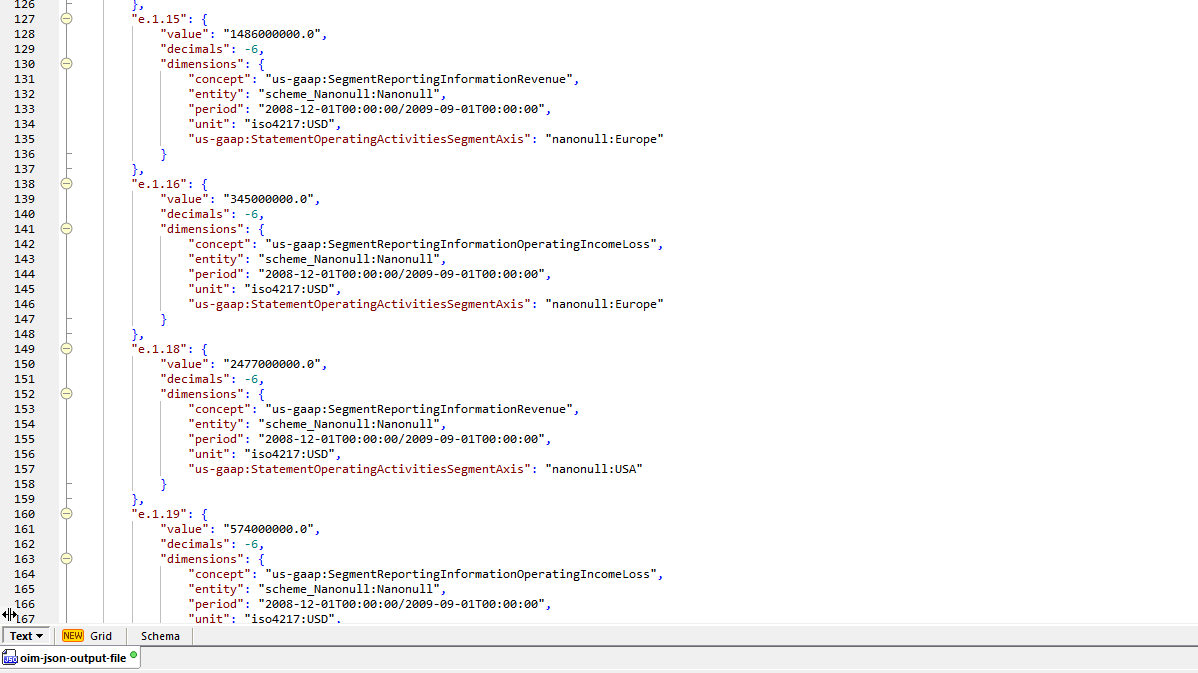2024-02-09T21:22:32
Status: #moc
Tags:
Links: [[home]] | [[Technology]] | [[Software Development]] | [[Standards]] | [[XML]] | [[XPath]] | [[XML Schema]]
# XBRL
**eXtensible Business Reporting Language (XBRL)** is a global framework used for exchanging business information. It's a language in the domain of business and financial information reporting that enables the organization and digitalization of data in a way that is both accessible and understandable. XBRL is developed and maintained by [XBRL International](https://xbrl.org), a global non-profit consortium, of which [[Altova]] is a direct member.
![[afalk42_An_illustration_for_a_knowledge_base_article_on_XBRL_th_60e0bb7e-03b2-4f46-a6a8-c2bf50b7149d.png]]
## Key Concepts of XBRL
- **Tags**: XBRL works by using tags to identify individual pieces of financial data. These tags are machine-readable, meaning that software can automatically understand and process the information without human intervention. Tagging of financial reports is often done based on the PDF or HTML versions of the financial reports, but more modern tools can also allow you to directly [tag financial data in Excel](https://www.altova.com/xbrl-tools#xbrl-excel) with an add-in:

- **[Taxonomies](https://www.altova.com/xbrl-tools#taxonomy-manager)**: Taxonomies in XBRL are dictionaries that define the specific tags used for reporting certain kinds of data. These include definitions of financial concepts, relationships between them, and rules for their presentation and calculation. Here is an example of an XBRL taxonomy being displayed in the [Taxonomy editor](https://www.altova.com/xmlspy-xml-editor#xbrl_tools) in [[XMLSpy]]:

- **Instance Documents**: These are the actual reports created using XBRL tags, following the structures defined by specific taxonomies. They include the financial data for a specific period or event.
- **XBRL Global Ledger (XBRL GL)**: An extension of XBRL, this provides a universal ledger that includes detailed transactional data, supporting complex reporting needs and internal data consolidation.
## Benefits of XBRL
- **Increased Transparency and Comparability**: Because data is tagged consistently across reports and entities, XBRL allows for greater transparency and ease of comparison among financial statements from different companies or periods.
- **Improved Efficiency and Accuracy**: Automation reduces the risk of errors in data transcription and facilitates faster preparation and analysis of financial information.
- **Interoperability**: XBRL reports can be read and analyzed by any XBRL-compatible software, promoting interoperability among different systems and software solutions.
## Applications of XBRL
- **Regulatory Reporting**: Numerous regulatory bodies worldwide require or accept financial statements in XBRL format, easing the submission and analysis of regulatory reports. These regulators often employ [high-powered XBRL validation servers](https://www.altova.com/raptorxml#xbrl-validator) to process thousands of incoming filings in real-time.
- **Corporate Reporting**: Companies use XBRL for internal reporting purposes, benefiting from its efficiency and accuracy to manage financial data and perform analyses.
- **Data Aggregation and Analysis**: Analysts, investors, and other stakeholders [use XBRL to gather and analyze financial data](https://www.altova.com/xbrl-tools#xbrl-mapping) from multiple sources more efficiently.
## Implementing XBRL
Organizations looking to adopt XBRL should consider the following steps:
1. **Understand Regulatory Requirements**: Determine if XBRL reporting is mandated by industry regulators and understand the specific requirements.
2. **Select Appropriate Software and Services**: Choose [XBRL software tools](https://www.altova.com/xbrl-tools) and, if necessary, consulting services to aid in the implementation and reporting process.
3. **Train Staff**: Ensure that relevant staff members understand XBRL, how to use the chosen tools, and best practices in data tagging and taxonomy management.
4. **Test and Validate**: Before submitting an XBRL report, thoroughly [test and validate the document](https://www.altova.com/xmlspy-xml-editor#XBRL) to ensure it meets all technical and regulatory requirements.
## Open Information Model (OIM)
The [Open Information Model](https://www.xbrl.org/Specification/oim/PR-2021-08-04/oim-PR-2021-08-04.html) (OIM) 1.0 is a new standard created by XBRL International in an effort to simplify working with XBRL data. Though XBRL provides an efficient, standards-based representation of business report data, such data is often originally generated, stored, and/or consumed in other formats.
The OIM provides a model for easily transforming XBRL data between XML and other popular formats including CSV and JSON. This way, organizations can take advantage of the functionality of XBRL and at the same time have XBRL documents written in the format(s) most convenient for them.
### How Does the OIM Work?
The [OIM provides new and simpler ways to work with XBRL data](https://www.altova.com/oim-tools#about-oim) to help organizations more easily realize the benefits of XBRL. OIM is an abstraction layer that decouples XBRL from the underlying XML syntax. The OIM instead defines the semantics of a digital report in a generalized form. It also provides a mechanism for mappings to JSON and CSV formats for XBRL data, with the potential for additional formats to be supported in the future.
XBRL International outlines the uses of each type of OIM as follows:
- **xBRL-CSV** is well suited for collecting large volumes of XBRL data in a compact manner
- **xBRL-JSON** helps simplify the understanding and use of XBRL data; presents business reporting data in a web-friendly format ideal for all kinds of analytic processes and systems
- **xBRL-XML** is the original approach to XBRL
Below is an example of XBRL data in JSON format. The xBRL-JSON was converted from an XML-based XBRL report:

### [OIM Tools](https://www.altova.com/oim-tools)
To fully realize the benefits of the OIM, developers need tools that provide validation of OIM data and easy transformation between xBRL-CSV, xBRL-JSON, and xBRL-XML. [Altova’s line of XBRL Certified Software products](https://www.altova.com/oim-tools) are among the very first to support this promising new standard.
## Challenges and Considerations
While XBRL offers many benefits, organizations might face challenges in implementation, such as the initial setup cost, training needs, and adjusting to new reporting processes. Furthermore, the quality of the reported data depends significantly on the accurate selection and application of tags, requiring a good understanding of the applicable taxonomy.
## Conclusion
XBRL revolutionizes how financial information is reported, shared, and analyzed, promoting greater efficiency, accuracy, and transparency. As regulatory requirements evolve and technology advances, XBRL's role in financial reporting is expected to grow, making it an essential tool for businesses, regulators, and stakeholders worldwide. Organizations are encouraged to embrace this technology to enhance their financial reporting capabilities and leverage the benefits it offers.